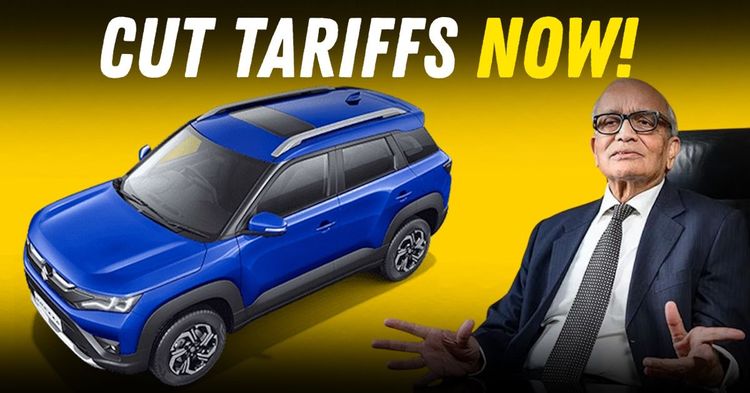Maruti Suzuki Chairman To Indian Govt: Don't hide behind tariff walls


R.C. Bhargava, the chairman of Maruti Suzuki, says as he sees it. Now, he has made a call to “not hide behind tariff walls” at a time when India stands at a crossroads—one foot firmly in its legacy of protectionism, the other poised to seize new opportunities in a rapidly globalising market. For Indian car buyers, this debate isn’t just about numbers and policies; it’s about the future of choice, quality, and value in the vehicles they bring home.

India’s auto industry has long enjoyed the comfort of high import tariffs, especially on fully built cars. With duties reaching as high as 70% for vehicles valued over $40,000, and additional cesses pushing the cost even higher, foreign brands have found it challenging to make significant inroads into the Indian market. This protectionist approach was, for decades, a shield—one that allowed local manufacturers to grow, experiment, and ultimately dominate the domestic market. Maruti Suzuki itself is a product of this era, rising to become the country’s largest carmaker and a household name.
But Bhargava’s message is clear: the time for hiding behind these walls is over. He believes that tariffs, while once necessary, now restrict competition and limit the industry’s growth potential. In his view, India’s automotive sector is robust enough to face global competition head-on. The real challenge, he argues, is not about keeping rivals out, but about making Indian-made cars more competitive—both at home and on the world stage.

This is more than just rhetoric. Maruti Suzuki has been steadily increasing its exports, sending nearly 700,000 cars annually to markets across the globe. Such numbers are a testament to the quality and competitiveness of Indian manufacturing. Bhargava points out that the world is changing, with countries like Cambodia, Vietnam, Indonesia, and Thailand also vying for a larger share of the global auto pie. To stay ahead, India must focus on building a more efficient, agile, and innovation-driven industry.
Bhargava’s vision isn’t just about slashing tariffs and opening the floodgates. He calls for a partnership between government and industry, where state governments streamline clearances and invest in infrastructure—land, power, water, roads, and drainage—delivered on time and to a high standard. He also urges company leaders to rethink their management systems, processes, and attitudes, fostering a culture of internal competition and continuous improvement.
This approach is already visible within Maruti Suzuki itself. The company has decentralised its manufacturing plants, treating them as independent strategic business units. This move encourages internal competition, pushing each plant to become more cost-efficient and reliable, with the most efficient units winning a larger share of business. Such internal reforms, Bhargava believes, are crucial for Indian companies to thrive in a more open market.
Of course, not everyone agrees with Bhargava’s stance. Some industry veterans argue that the very success of Maruti Suzuki was built on the foundation of high tariffs, which gave it the breathing space to grow while foreign competitors were kept at bay. They worry that lowering tariffs now could expose Indian manufacturers to unfair competition, especially from countries with more mature automotive industries.
Yet, Bhargava remains optimistic. He sees the current moment as an opportunity—a chance for India to play a bigger role in the global automotive supply chain, to increase exports of both vehicles and components, and to attract new investments. The government’s production-linked incentive schemes for green vehicles and components are a step in this direction, aiming to triple component exports by 2030 and boost vehicle exports to a quarter of total output.
For Indian car buyers, the implications are significant. A more open market could mean greater choice, better technology, and more competitive prices. It would also push local manufacturers to up their game, delivering higher quality and more innovative products. Bhargava’s message, ultimately, is one of confidence: India’s auto industry is ready for the world, and the world is ready for Indian cars. The time has come to step out from behind the tariff walls and embrace the opportunities that lie ahead.